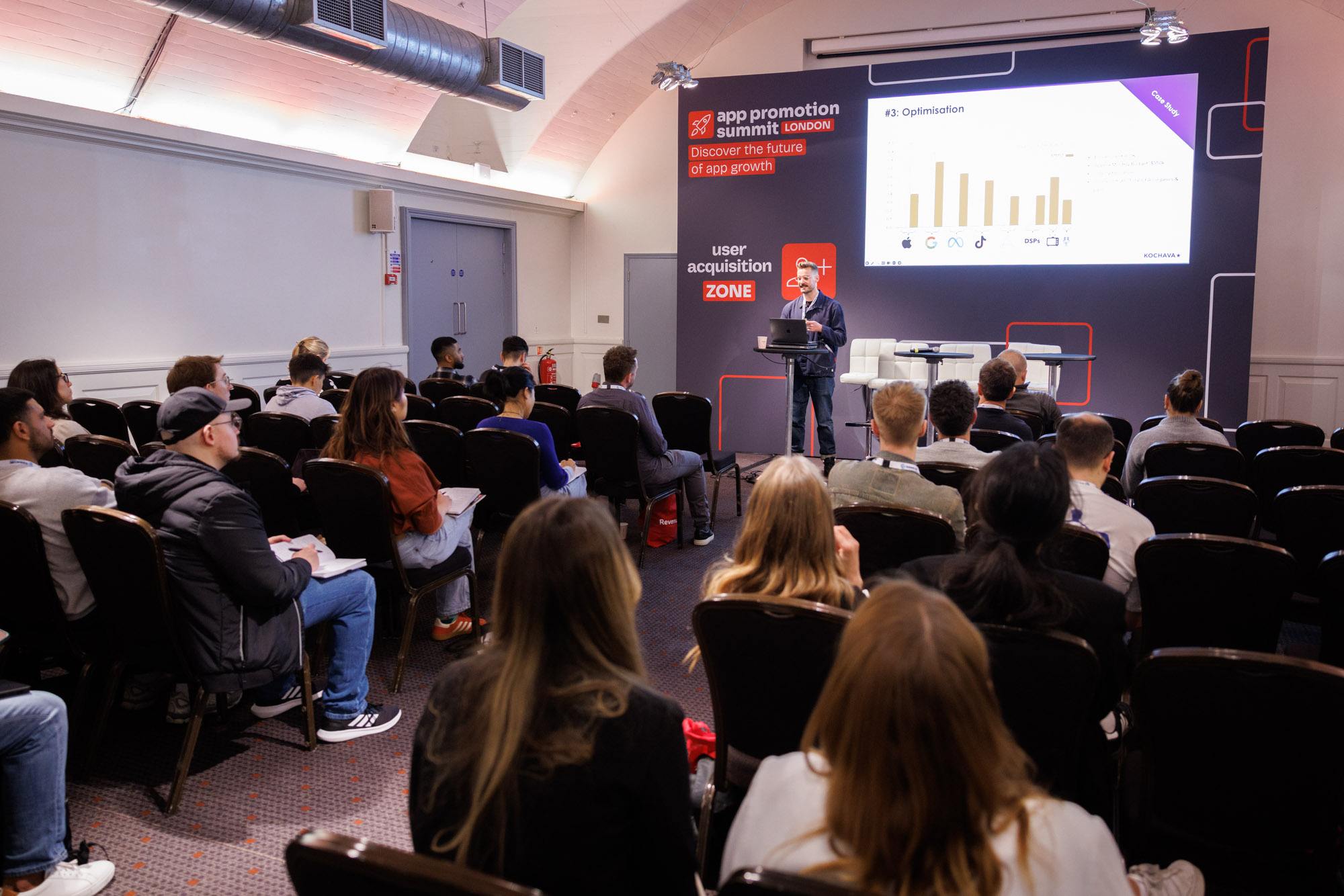New data from mobile measurement platform Kochava reveals that artificial intelligence is exposing massive flaws in how app marketers measure success, with nearly half of marketing budgets generating only 7% of actual value. The analysis also shows Apple Search Ads receiving up to 75% more credit than it deserves while other channels are systematically undervalued by billions of dollars.
The findings, presented by Kochava’s Gary Danks at App Promotion Summit London 2025, show that traditional last-touch attribution is creating industry-wide budget misallocation that’s costing companies millions in wasted ad spend.
The $500-per-conversion problem hiding in plain sight
Marketing Mix Modeling (MMM), the AI-powered statistical method that’s rapidly replacing last-click attribution, is revealing uncomfortable truths about where app marketing dollars actually work. Analysis of 16 of Kochava’s North American clients showed that in one case, 47% of a marketing budget generated only 7% of actual value.
“Between point B and point C, you’ve spent $2,000 just to acquire four more new orders. That’s a CPA of $500 for those last few conversions,” Danks explained, walking through real client data that showed how traditional measurement systems miss these efficiency cliffs entirely.
The problem isn’t just academic. When a UK eCommerce client with a $550,000 monthly budget followed MMM recommendations to reallocate spend without increasing total investment, their cost per acquisition dropped 33% within weeks.
Bottom-funnel channels systematically over-credited
The most striking revelation involves Apple Search Ads, which appears 75% less influential under MMM analysis compared to last-touch attribution. The reason? ASA typically serves as the final touchpoint before app installation, artificially inflating its apparent value.
“ASA often gets credit for users who are already on their way. I like to describe it as the movie theater poster. You see it on the way, but your decision was already made before you got to the App Store,” Danks said.
Meanwhile, platforms like Meta, TikTok, and AppLovin are being systematically undervalued by traditional attribution, revealing what Danks calls “a massive opportunity for marketers.”
The pattern holds across both iOS and Android, with Google facing similar over-attribution due to its control of both the Play Store and search results.
MMM for app growth in 2025
Source: App Promotion Summit
AI is transforming measurement from diagnostic to prescriptive
What separates MMM from traditional incrementality testing is its predictive power. While legacy attribution tells you what happened, AI-powered MMM models answer three critical questions: what’s adding incremental value, when do returns start dropping off, and where should you invest next.
“It’s not just retrospective insight, it’s a roadmap based on your KPIs,” Danks emphasized. “Whether you’re optimizing CPA or ROAS or another goal, MMM tells you exactly how much to spend in each channel to maximize efficiency.”
The technology builds cost curves for each marketing channel, using machine learning to analyze historical spend and performance data. This reveals the exact moment when additional investment stops delivering proportional returns — information that’s invisible to traditional attribution methods.
The measurement revolution accelerates
The shift toward MMM represents more than just better math; it’s part of the broader AI transformation of marketing operations. As privacy regulations continue restricting traditional tracking methods, companies are turning to statistical modeling that doesn’t rely on individual user tracking.
“We’re measuring influence, not just what happened last,” Danks explained. “The question to ask yourself is: do you want to be investing in influence, or do you want to be investing in the final touchpoint?”
For an industry that spends billions annually on user acquisition, the implications are staggering. If traditional attribution is systematically misallocating budget across major platforms, the collective waste could represent hundreds of millions in annual overspend on bottom-funnel channels alone.
Sometimes the most transformative change isn’t spending more, it’s spending smarter.




















